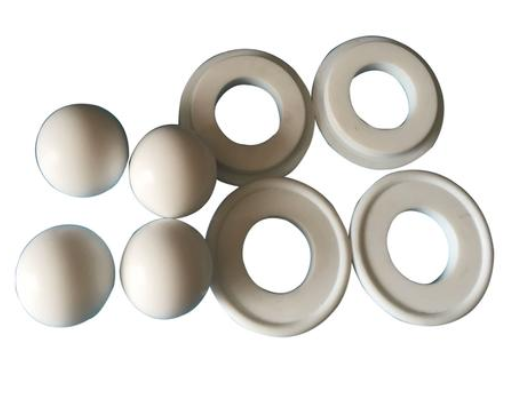Ball valve assembly for air operated diaphragm pump
The ball valve assembly of the pneumatic diaphragm pump is one of the key components of the pump. It mainly acts as a one-way valve to ensure that the liquid can flow in one direction during the pumping process and prevent backflow. The following is a detailed analysis of the ball valve assembly of the pneumatic diaphragm pump:
1. The composition of the ball valve assembly
The ball valve assembly is usually composed of a ball, a ball seat, and corresponding O-rings. These components are precisely processed and assembled to form a one-way valve that can control the flow direction of the liquid.
Ball: It is the core component of the ball valve assembly, and its shape is usually spherical. There is usually a small hole or channel on the ball to control the passage of the liquid. When the ball fits tightly with the ball seat, the liquid cannot pass; when the ball rotates or moves to a certain position, the small hole is aligned with the channel on the ball seat, and the liquid can pass.
Ball seat: used to support and position the ball to ensure that the ball can maintain the correct position during operation. The ball seat is usually connected to the pump body by threads or other means to form a sealed chamber.
O-ring: installed between the ball and the ball seat to play a sealing role. It can prevent liquid from leaking between the ball and the ball seat, ensuring the sealing and reliability of the pumping process.
2. Working principle of the ball valve assembly
During the working process of the pneumatic diaphragm pump, the ball valve assembly realizes the unidirectional flow of liquid in the following ways:
Suction stage: When the diaphragm pump plate moves outward, negative pressure is generated in the pump chamber and the suction valve opens. At this time, the ball of the ball valve assembly is in an open state (that is, the small hole is aligned with the channel on the ball seat), allowing liquid to enter the pump chamber from the suction pipe.
Discharge stage: When the diaphragm pump plate moves inward, the liquid in the pump chamber is compressed and pushed toward the discharge valve. At this time, the ball of the ball valve assembly fits tightly on the ball seat under the action of liquid pressure, preventing the liquid from flowing back into the pump chamber. At the same time, the discharge valve opens to discharge the liquid out of the pump.
3. Maintenance and care of ball valve assembly
In order to ensure the long-term stable operation of the pneumatic diaphragm pump, the ball valve assembly needs to be regularly maintained and serviced:
Inspection and replacement: Regularly check the wear of the ball valve assembly. If the ball or ball seat is severely worn, the O-ring is aged or damaged, etc., replace the new parts in time.
Cleaning and lubrication: Regularly clean the various parts of the ball valve assembly to remove the dirt and impurities attached to it; at the same time, lubricate the parts that need lubrication to reduce wear and friction.

Tightening and adjustment: Check the connection between the ball valve assembly and the pump body to ensure that the connection is firm and reliable; at the same time, adjust the position and angle of the ball as needed to ensure its normal operation.




